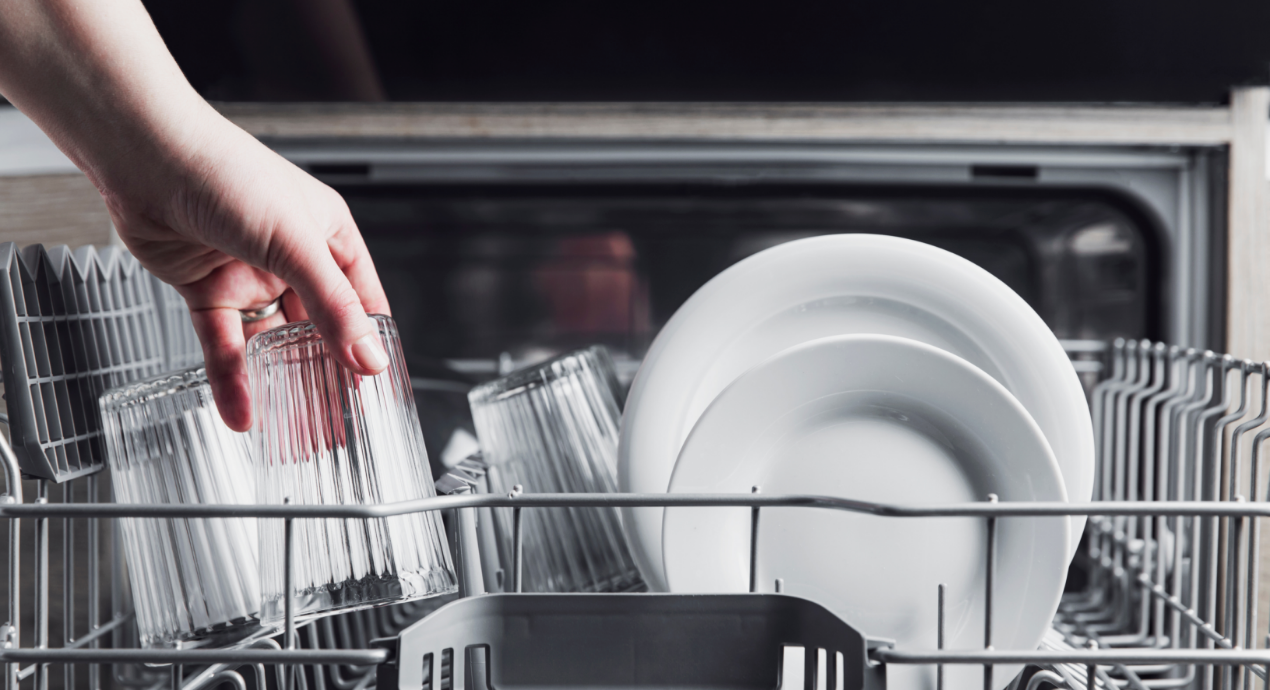
Contemplating coverage?
Subscribe to receive our emails & get
$200 OFF!
Have questions?
Call us: (833) 544-8273


Written By Erin Easley
Have you opened your dishwasher the next morning only to find that the dishes are still wet, even though you selected the dry cycle? Or as you are putting the dishes away, you notice there is still food on them? There is nothing worse when you have guests coming than to have dishwashing problems to get the day started.
You have a dishwasher so that you don’t have to scrub, wash, rinse, and dry by hand. And when the dishwasher isn’t working properly, you want a quick repair, but of all things in a home to be repaired, the dishwasher isn’t always the most important.
There's a reason Liberty Home Guard was rated the #1 Home Warranty
Service by U.S. News and World Report for 2021, 2022, 2023, and 2024. Check out our services.
With this appliance, if you can troubleshooting dishwashers yourself, you can usually fix the unit yourself. And if you can’t fix it yourself, you’ll be able to give the customer service representative at the home warranty company a more exact description that will allow them to send the technician with the right equipment and tools. This why having a home warranty coverage for dishwashers is a good idea. Because if you don’t have that coverage and you can’t repair yourself, the expense of buying a new unit is going to be totally out-of-pocket.
When the dishes aren’t getting dried or you have spotty glasses after running the dishwasher, don’t think it is just you. These are common dishwasher problems and experienced appliance technicians that Liberty Home Guard have on stand-by are ready to get it in working condition again for you or advise if the unit should be replaced. But we can also offer you some tips on the most common dishwasher problems and offer you some DIY tips before you call us or any service technician:
If you aren’t using a liquid rinse aid, which all dishwashers today are designed to use, that could be the problem. The drying is improved greatly when you use a liquid rinse aid because it stops the formation of water droplets. This also keeps your dishes from spotting and streaking as they go through the dry cycle. Some automatic dishwashing detergents and tablets have a rinse aid within them but adding an additional liquid rinse aid in the designated dispenser is recommended by manufacturers and technicians alike.
If your dishwasher isn’t draining all the way, check your garbage disposal to make sure it is installed correctly, and the drain plug is in place, especially if you have just installed a new garbage disposal. It is common that the knockout plug is left in place. And because the dishwasher drain hose is connected the garbage disposal, that knockout plug must be removed for the dishwasher to drain. The licensed plumber that installed your unit should have verified all that, but if not, give them a call. You should also make sure the drain hose is securely connected, which a professional installation this is protocol.
If the water isn’t hot enough coming into the dishwasher, fixing dishwasher could be as easy as checking the cycle you have set. The cycle time may be longer than expected. You can eliminate this by not running not water prior to starting the unit. You can also run the hot water at the kitchen sink long enough to move any cold water in the pipes out.
Check the cycle selection you set the unit on. There are cycles that run longer to sanitize, and the extra-dry heat option will make the cycle longer too. A dishwasher in good working order will take 2 minutes to heat the water up 1 degree. If you don’t have your water heater set to a minimum of 120ºF, it will cause the dishwasher to run longer so that the water gets heated.
Many dishwashers will have a removable filter and as part of dishwasher maintenance, that filter should be cleaned and even replaced every so often to keep the unit in good working order. The owner’s manual will have instructions on how to change or clean the filter. When left untouched, they become clogged and dirty which results in crumb and food left on your dishes after the unit as completed all cycles.
Stay Ahead of Potential
Home Mishaps!
Subscribe to our Liberty Home Guard Newsletter and gain access to exclusive content that ensures your peace of mind.